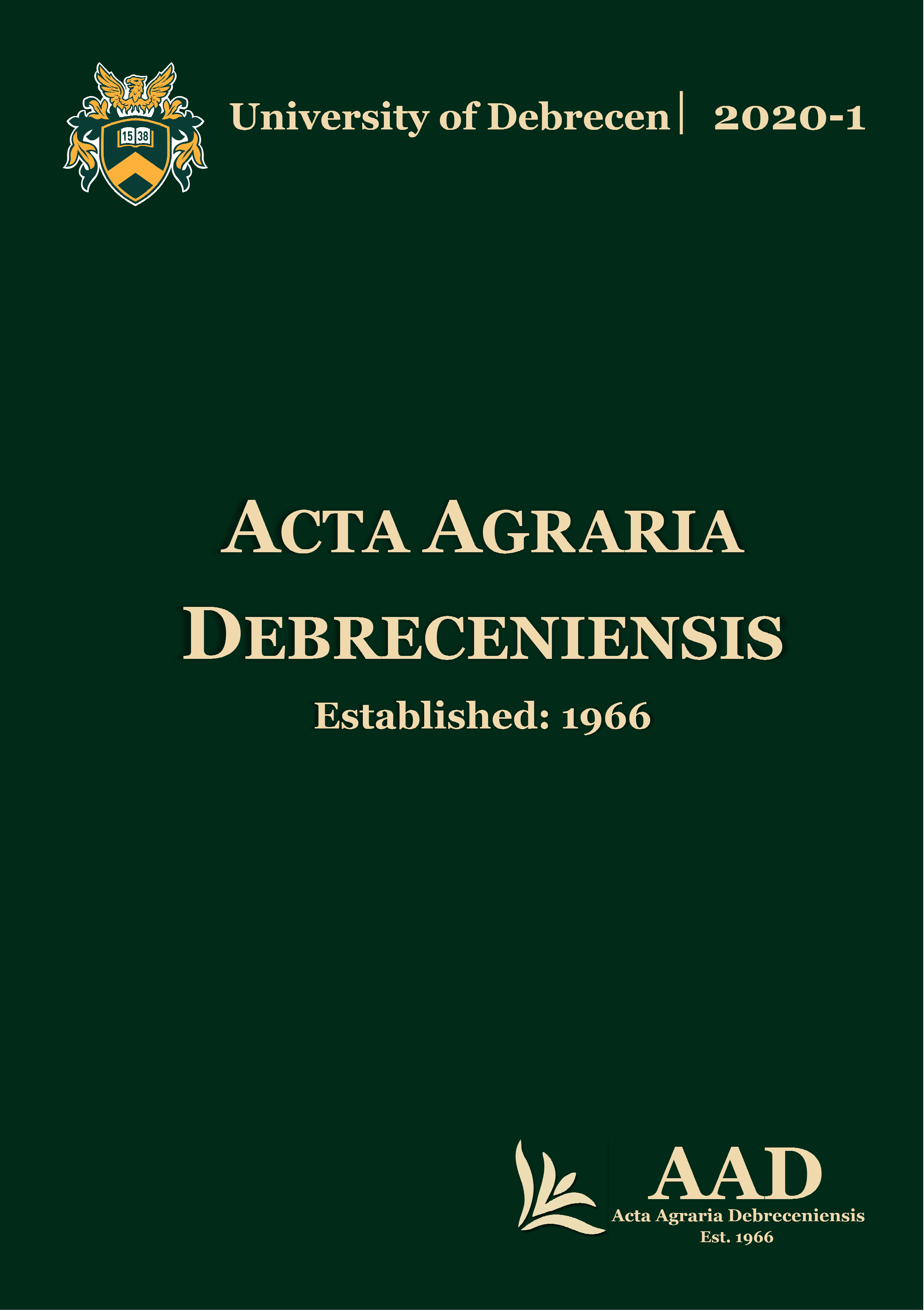Examination of drought stress of two genotype maize hybrids with different fertilization
Authors
View
Keywords
How To Cite
Accepted 2020-02-17
Published 2020-05-20
Abstract
In the growing season of 2019, we analysed stress resulting from climatic factors on maize hybrids of different genotypes, with the aim of gaining a better understanding of the physiological responses of each hybrid, which might support the elaboration of a cost-effective irrigation plan.
Our experiments were carried out at the Látókép Experimental Station of the University of Debrecen on calcareous chernozem soil in a small-plot long-term field trial with strip plot design. In the scope of the experiment, N-fertilizer doses were applied as basic fertilizer and top-dressing in addition to the non-fertilized (control) treatment. The 60 and 120 kg N/ha doses applied as basic fertilizers in the spring were followed by top-dressing in the V6 phenophase with a +30 kg N/ha dose. Measurements were carried out with the involvement of the Renfor early (FAO 320) and Fornad (FAO 420) late maturity hybrids-
The stomata of the plants became more and more closed with the progression of the phenological phases; their stomatal conductance decreased. However, the hybrids responded differently to environmental stress. In the case of the Renfor hybrid, the highest conductance (669 mmol/m2-s) was recorded in the V12 phenophase with the 150 kg N/ha treatment. The stomata were more open due to the high turgor pressure, allowing plants to evaporate properly. The plant was in its worst physiological condition on 2nd July, at the time of the appearance of the last leaf in the case of the 120 kg N dose (224 mmol/m2-s). The value measured in the V12 phenophase has already shown that the stomata were closing due to the self-regulating system of the plant. It would have been necessary to dispense irrigation water following the measurement. This confirms the finding that water stress can be prevented by measuring stomatal conductance.
In the case of the Fornad hybrid, stomatal conductance was the highest on 12th June (630 mmol/m2-s) in the 90 kg N/ha treatment and it was the lowest (183 mmol/m2-s) in VT (emergence of the last leaf) phenophase in the 60 kg N/ha treatment. In this case, the appropriate time for applying irrigation water would have been early July, when the conditions for the plants were still adequate. Subsequently, the stomata began to close due to a reduction of the water resources available to them.
There was a significant correlation between soil moisture and stomatal conductance, as well as between temperature and stomatal conductance.

 https://doi.org/10.34101/actaagrar/1/3757
https://doi.org/10.34101/actaagrar/1/3757